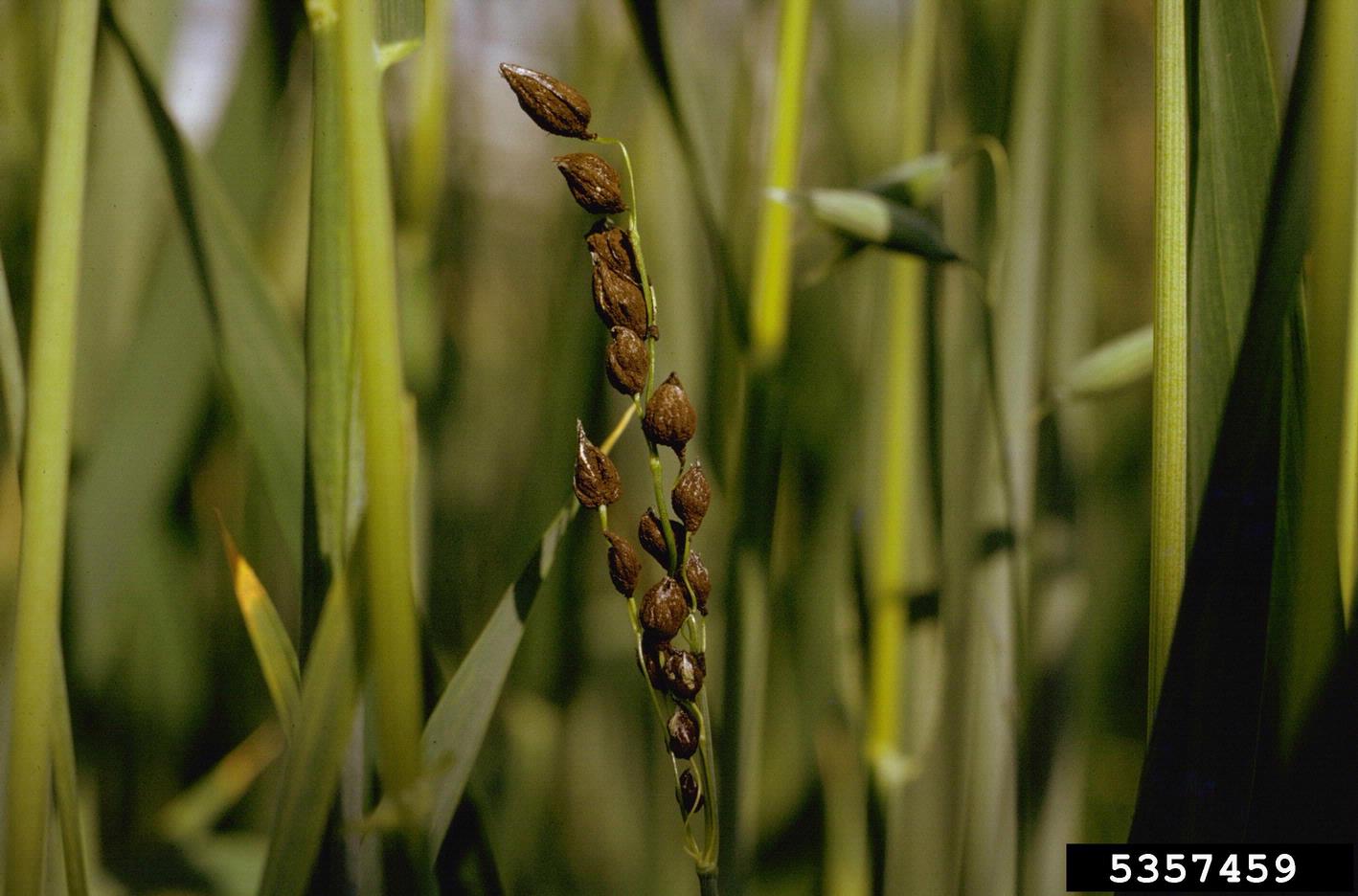Oats Loose Smut Control – What Causes Oat Loose Smut Disease


Loose smut of oats is a fungal disease that damages various types of small, grain cereal crops. Different fungi affect different crops and are usually host-specific. If you grow cereal crops, it’s good to understand the basics about loose smut of oats in order to prevent it. Read on for information about what causes oat loose smut, as well as tips on oats loose smut control.
Oats Loose Smut Info
Loose smut of oats is caused by the fungus Ustilago avenae. You are likely to find this disease almost everywhere oats are grown. Related species of Ustilago attack barley, wheat, corn, and other cereal grasses.
The term “smut” is a descriptive one, referencing the appearance of the black spores typical of oats with loose smut. According to oats loose smut information, the fungal spores enter and infect the oat seed kernels. They are visible on the seed heads that look gray and smutty.
What Causes Oat Loose Smut?
The fungal pathogen causing oats with loose smut is transmitted through infected seeds. It lives from season to season inside the embryo of the seed. Infected seeds look normal and you cannot tell them from healthy seeds.
Once the infected seeds germinate, however, the fungus is activated and infects the seedling, usually when the weather is cool and wet. As flowers start to form, the oat seeds are replaced with the black, powdery spores of the fungus. The infected oat heads usually emerge early and spores are blown from one plant to others nearby.
Oats Loose Smut Control
Anyone growing oats will want to find out about effective oats loose smut control. What can you do to prevent this fungus from attacking your crops?
You can control this disease by treating the seed with systemic fungicides. Don’t rely on contact fungicides to treat oats with loose smut since the fungus causing it is inside the seed. Carboxin (Vitavax) is one that works.
Sign up for the Gardening Know How newsletter today and receive a free copy of our e-book "How to Grow Delicious Tomatoes".
You should also take care to use oat seed that is clean and healthy, completely free of the fungus. Grain varieties are available that are resistant to loose smut of oats, and these are a great idea as well.

Teo Spengler is a master gardener and a docent at the San Francisco Botanical Garden, where she hosts public tours. She has studied horticulture and written about nature, trees, plants, and gardening for more than two decades, following a career as an attorney and legal writer. Her extended family includes some 30 houseplants and hundreds of outdoor plants, including 250 trees, which are her main passion. Spengler currently splits her life between San Francisco and the French Basque Country, though she was raised in Alaska, giving her experience of gardening in a range of climates.